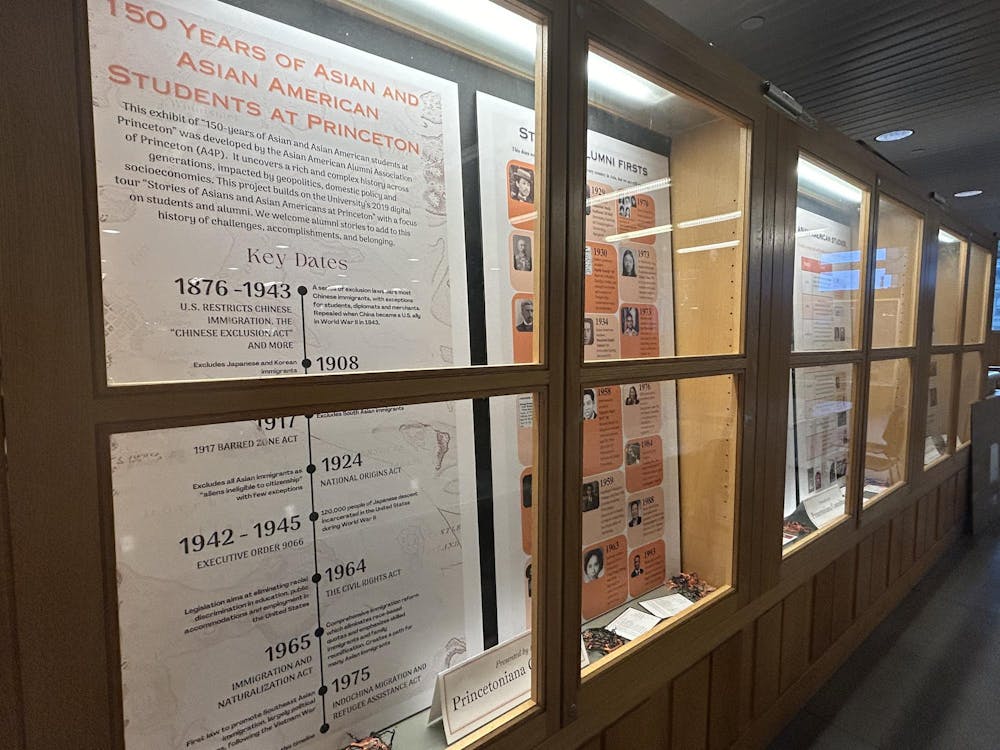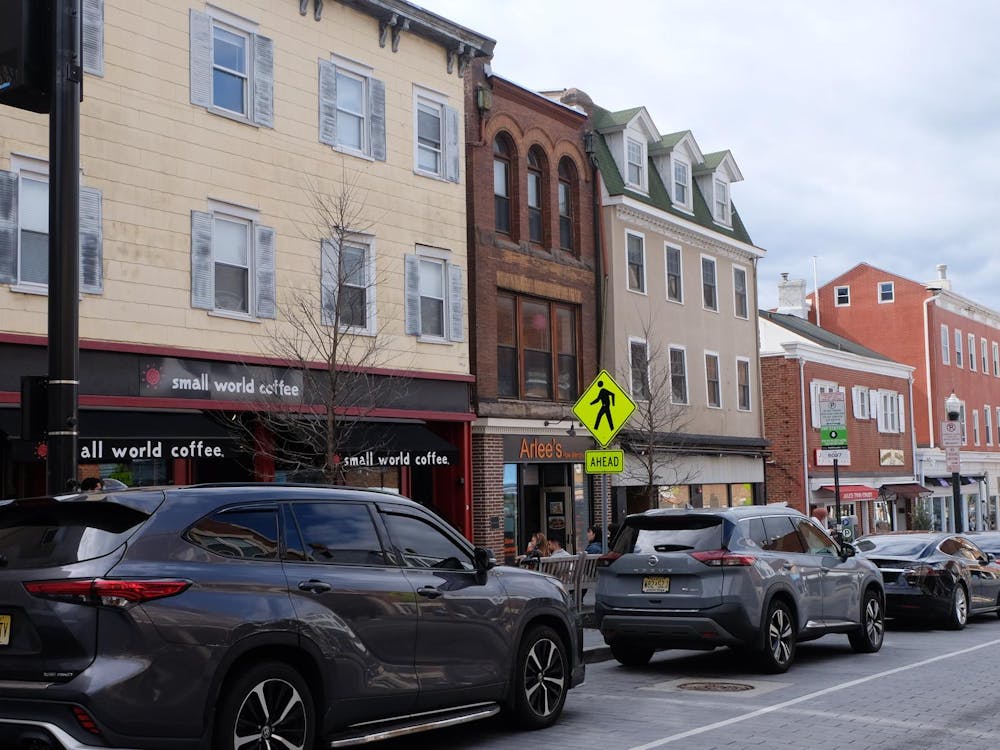In 2019, Nancy Lin ’77 participated in Stories of Asian and Asian Americans at Princeton, a digital walking tour of campus organized by the Asian American Alumni Association of Princeton (A4P), and the University’s Office of Diversity and Inclusion. Lin, the co-chair of A4P, noticed that one particular alumnus, Syngman Rhee Class of 1910 — the first president of South Korea from 1948 to 1960 — was not included in the tour due to his authoritarian leadership.
“This made me think of writing stories for alumni, by alumni, about our history. We may not like the stories, but we should know the facts,” Lin said. “I’ve been fortunate to meet or hear about many Asian heritage Princeton alumni and wanted us to have a place to see, even on a high-level summary level, how far back Asians were part of Princeton’s history and their many contributions in the last several decades.”
To map out this history, A4P, in partnership with the Princetoniana Committee, developed the new exhibit “150 Years of Asian and Asian American Students at Princeton.” The exhibit features an in-depth view into the political, geographic, and socioeconomic history of generations of Asians and Asian Americans at the University. Located on the 100 Level of Frist Campus Center, the display will be available for viewing throughout May, Asian American and Pacific Islander (AAPI) Heritage Month, which notably includes Reunions and Commencement.
The display begins with a timeline of key U.S. policies that shaped Asian immigration and follows with groundbreaking Asian and Asian American “firsts,” University admissions and demographic data, the Asian American Studies program, notable alumni profiles, and lastly, a feature of A4P’s most recent gatherings.
According to Lin, the corpus of Asian and Asian American history found during the four-year research process was both valuable and abundant. After much investigation through the Mudd Library Digital Archives, The Daily Princetonian archives, and Princeton Alumni Weekly, Lin and other contributors found themselves with too many stories and too little space in the exhibit to include them.
Princetoniana Committee Director Jean Hendry GS ’80, who oversees the documentation of the University’s history, agreed. She recalled receiving “volumes and volumes” of information, requiring the organizers to condense and organize their research into the six windows of the current exhibit.
“We tried to make not just lists and lists and lists,” Hendry said. “It has to be photographic. It has to be something visually encouraging. I think that’s what it is — it turned out to be really nice.”
The first window of the exhibit provides a brief overview of the University’s history of Asian and Asian American students. It also features a timeline that highlights many key policies that shaped Asian immigration in the United States, including the 1882 Chinese Exclusion Act, Executive Order 9066, as well as Southeast Asian laws like the 1975 Indochina Migration and Refugee Assistance Act.

The second window highlights student and alumni “firsts” — pioneers of the demographic shift at the University.
“I’ve been impressed by the bravery and determination of students coming to Princeton,” Lin said. “The earliest pioneers were initially from government sponsored programs, later from war-torn countries — Asian Americans whose families fled here or came for higher education.”
Notable students include Rioge Koe Class of 1874, the first Asian student to ever matriculate at the University, but who was called back to Japan before completing his degree, Hsu Kun Kwon Class of 1914, a Boxer Rebellion Indemnity Scholar and the first Asian to appear on The Daily Princetonian’s Editorial Board, and later national leaders like Christopher P. Lu ’88, who later became the U.S. Deputy Secretary of Labor. The window also highlights the first nine undergraduate women who enrolled in 1970, five of which were of Asian descent.
“The early people who did something absolutely major — I think that that’s the most important thing to me,” Hendry said. “They’re the ground breakers, and they paved the way for everyone else.”

“I was really impressed by the first female Asian students, because, I think, not only their genders but a lot of things must have impacted their decision to come to Princeton in the 1960s–1970s society,” Tomoka Ohmori ’27, a visitor of the exhibit, said. “Because of their efforts and their accomplishments, I, as an Asian student from Japan, am able to take education here.”
Lin also noted the historical challenge of finding the first Indian student, Henry Goloknath, Class of 1882, who was actually not identified in the 2019 walking tour project. Without the names nor class years of the students, it proved difficult to find their biographies.
“Looking for the first Indian at Princeton was much harder than the first Chinese or Japanese because the search term ‘Indian’ going back in history brings articles of Native American ‘Indians,’” Lin recalled. “I found Henry by going through class lists from 1876 and scanning names, picking out names that did not sound Western.”
Themes of prejudice and discrimination were not uncommon discoveries, especially in the research into the earliest Asian immigrants into the United States and the first Asian students at the University. However, the contributors expressed taking special care to avoid neglecting this significant element of history.
“Juggling between how to represent Asian Americans in a positive light, but also showing the discrimination and the negative things that they faced — that was another thing that we were really focused on,” Kristin Jung ’26, a RISE intern that worked on the exhibit, said. “[We wanted] to tell a whole story about the 150 years of Asian Americans at Princeton.”
The next two windows of the exhibit move to focus on the present. In the third window is a showcase of admissions and demographics data beginning from the 1970s, including the 2022 Supreme Court ruling barring race-based admissions. The fourth window displays info about the Asian American Studies (AAS) program, which became an official certificate program in 2018 and a minor in 2023.
The fifth window identifies more notable alumni that, according to Lin, showed “tremendous appreciation and loyalty to Princeton.” Older generations included Hisashi Kobayashi GS ’67, the first Asian dean of the School of Engineering and Applied Sciences, and Sir Gordon Wu ’58, who donated $100 million to the University in 1995 — the largest donation recorded at the time. More recent highlights feature faces familiar to current students, such as Nobel Laureate Maria Ressa ’86, Yeh College donor James Yeh ’87, and AI pioneer Fei-Fei Li ’99.
In particular, the fifth window also attests to the extensive efforts behind a national movement for Asian American Studies (ASA), from professor Franklin S. Odo ’61, who championed the effort in the 1960s, to professor Anne Cheng ’85, who was a founding member of the ASA program at the University.
Professor and ASA Director Beth Lew-Williams was involved in reviewing and offering feedback on the timeline portion of the exhibit.
“I love seeing some of my mentors and role models celebrated — folks who pushed Asian American Studies forward — including Franklin Odo, Denny Chin ’75, Gordon Chang ’70, Helen Zia ’73, and Anne Cheng,” Lew-Williams said.
The sixth and final window of the exhibit presents a colorful collage of A4P’s most recent gatherings, with group photos featuring notable alumni from Reunions to Alumni Day. At the bottom of the window is a call to action for the 2026 “We Flourish” Conference, a celebration of Asian and Asian American Alumni history with numerous discussions, performances, and social events.
“It’s got this coming-together-ness, a shared experience,” Hendry said. “That’s what’s so important about so much of what has gone on at this university — shared experiences.”
Overall, the contributors noted that the exhibit was an informative learning experience for themselves and also hoped that the exhibit would bring the same enrichment to its visitors.
“I think people assume that [since] Asian Americans are a big percentage of campus, they’ve always been there, but that’s not really the case. The history of [Asian and Asian Americans] is a lot more recent,” Jung said. “I think seeing it, the history of your own campus, brings a different light to Princeton.”
“I hope the exhibit answers some questions and spurs curiosity and reflection,” Lin said. “There are many fascinating stories of twists and turns, sheer determination, challenges and accomplishments, and contributions to the broader legacy of being Princeton students and alumni.”
After the physical display, the exhibit will be archived digitally on the Princetoniana Museum website, where the open virtual space will allow for additional links and content about more fascinating tidbits of Asian and Asian American history.
Coco Gong is a Features staff writer for the ‘Prince.’
Please send any corrections to corrections[at]dailyprincetonian.com.








